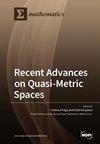Prediction of Wind Turbine Gearbox Oil Temperature Based on Stochastic Differential Equation Modeling
IF 2.2
3区 数学
Q1 MATHEMATICS
引用次数: 0
Abstract
Aiming at the problem of high failure rate and inconvenient maintenance of wind turbine gearboxes, this paper establishes a stochastic differential equation model that can be used to fit the change of gearbox oil temperature and adopts an iterative computational method and Markov-based modified optimization to fit the prediction sequence in order to realize the accurate prediction of gearbox oil temperature. The model divides the oil temperature change of the gearbox into two parts, internal aging and external random perturbation, adopts the approximation theorem to establish the internal aging model, and uses Brownian motion to simulate the external random perturbation. The model parameters were calculated by the Newton–Raphson iterative method based on the gearbox oil temperature monitoring data. Iterative calculations and Markov-based corrections were performed on the model prediction data. The gearbox oil temperature variations were simulated in MATLAB, and the fitting and testing errors were calculated before and after the iterations. By comparing the fitting and testing errors with the ordinary differential equations and the stochastic differential equations before iteration, the iterated model can better reflect the gear oil temperature trend and predict the oil temperature at a specific time. The accuracy of the iterated model in terms of fitting and prediction is important for the development of preventive maintenance.基于随机微分方程建模的风力涡轮机齿轮箱油温预测
针对风电齿轮箱故障率高、维护不便的问题,本文建立了可用于拟合齿轮箱油温变化的随机微分方程模型,并采用迭代计算方法和基于马尔可夫的修正优化来拟合预测序列,以实现对齿轮箱油温的精确预测。该模型将变速箱油温变化分为内部老化和外部随机扰动两部分,采用近似定理建立内部老化模型,利用布朗运动模拟外部随机扰动。根据变速箱油温监测数据,采用牛顿-拉夫逊迭代法计算模型参数。对模型预测数据进行了迭代计算和基于马尔可夫的修正。在 MATLAB 中模拟了变速箱油温的变化,并计算了迭代前后的拟合误差和测试误差。通过比较迭代前与常微分方程和随机微分方程的拟合误差和测试误差,迭代后的模型能更好地反映齿轮油温度的变化趋势,并预测特定时间的油温。迭代模型在拟合和预测方面的准确性对预防性维护的发展非常重要。
本文章由计算机程序翻译,如有差异,请以英文原文为准。
求助全文
约1分钟内获得全文
求助全文
来源期刊

Mathematics
Mathematics-General Mathematics
CiteScore
4.00
自引率
16.70%
发文量
4032
审稿时长
21.9 days
期刊介绍:
Mathematics (ISSN 2227-7390) is an international, open access journal which provides an advanced forum for studies related to mathematical sciences. It devotes exclusively to the publication of high-quality reviews, regular research papers and short communications in all areas of pure and applied mathematics. Mathematics also publishes timely and thorough survey articles on current trends, new theoretical techniques, novel ideas and new mathematical tools in different branches of mathematics.
 求助内容:
求助内容: 应助结果提醒方式:
应助结果提醒方式:


